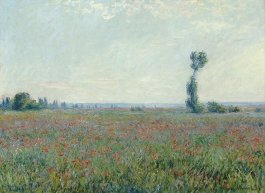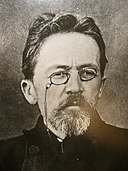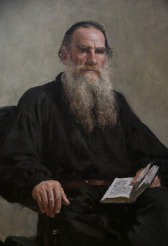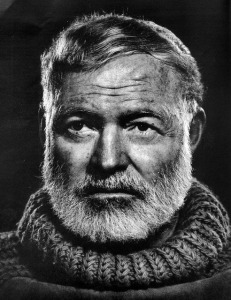You Don’t Have to Feel Good to Have a Delightfully Productive Day
I follow sports closely, and it surprises me how often swimmers, tennis players, track stars, basketball players, and other athletes perform their record best on the very days they are not feeling fit physically or emotionally. They feel “off” but nevertheless they compete and often they excel.  I think of the famous Michael Jordan “flu game” when he had to be carried off the floor after the game with the flu by a teammate, yet scored 38 points and led the Bulls to victory. “Probably the most difficult thing I have ever done,” said Jordan.
I think of the famous Michael Jordan “flu game” when he had to be carried off the floor after the game with the flu by a teammate, yet scored 38 points and led the Bulls to victory. “Probably the most difficult thing I have ever done,” said Jordan.
That illogical phenomenon of feeling unprepared and yet excelling also applies to people in the arts. Robert Boice said, “Beyond doubt, creative writers who begin a project before feeling prepared or motivated achieve more quantity and quality.” Feeling out of sorts used to stop me. When I wasn’t feeling right, I’d think, “Why even try?” But now, because I am familiar with athletes not feeling good but performing so well, when I feel not ready at all to write, I become optimistic and confidently sit down at the computer and expect a productive day, and usually have one.
You will be more productive if like those athletes you don’t make your mood the dictator of your performance, but simply however you feel you do your work. Don’t live by how you feel. Everyone  would prefer to be cheerful and happy, but as far as creative work is concerned, how you feel is secondary. What matters most are the requirements of the craft you have committed yourself to, and one requirement is day after day to put out effort to achieve your creative goals. It seems to me that one constant goal that is shared by most people in the arts is to develop your in-born talents to the fullest and that another requirement is to produce finished works. When you see your talents growing and you are producing original works regularly and everything is meshing, you are at your best, and you know it.
would prefer to be cheerful and happy, but as far as creative work is concerned, how you feel is secondary. What matters most are the requirements of the craft you have committed yourself to, and one requirement is day after day to put out effort to achieve your creative goals. It seems to me that one constant goal that is shared by most people in the arts is to develop your in-born talents to the fullest and that another requirement is to produce finished works. When you see your talents growing and you are producing original works regularly and everything is meshing, you are at your best, and you know it.
In the nineteen-sixties a number of America’s excellent poets who knew each other well felt that to write their best poetry–to be in what they thought was the ideal mood for writing verse– they had to feel deeply depressed. That was their philosophy and what they talked and  corresponded about. Nurturing depression in and out of psychiatric hospitals, some of them committed suicide including John Berryman and Randall Jarrell. Poets Sylvia Plath and Ann Sexton were friends and felt the same. They talked to each other often, and also committed suicide.
corresponded about. Nurturing depression in and out of psychiatric hospitals, some of them committed suicide including John Berryman and Randall Jarrell. Poets Sylvia Plath and Ann Sexton were friends and felt the same. They talked to each other often, and also committed suicide.
But you don’t have to feel miserable to write a poem or a tragedy or be in love to write a romance. Anton Chekhov said that ironically happy writers write sad things and sad writers write happy things. Gustav Flaubert said that the less writers feel a thing, the more likely they are to express it as it really is. J.D Salinger wrote that ecstatically happy prose writers have disadvantages. They can’t be moderate, temperate, detached, or brief.
Some writers seem so grim and bitter about their need to write. George Orwell said that “Writing a book is a horrible, exhausting struggle, like a long bout of some painful illness. One would never undertake such a thing if one were not driven on by some demon one can never resist or understand.” Opera composer Giacomo Puccini said “Art is a kind of illness.” Nobel laureate Ernest Hemingway felt differently. He felt awful when he wasn’t writing, the opposite when he was: “Suffer like a bastard when don’t write, or just before, and feel empty…Never feel as good as while writing.”
 Whatever has been said about the relationship between creatives’ state of mind and their performance, writers and painters I know or have read or heard about have found writing or painting the most fulfilling and blissful thing they do.
Whatever has been said about the relationship between creatives’ state of mind and their performance, writers and painters I know or have read or heard about have found writing or painting the most fulfilling and blissful thing they do.
Overview
I have assembled a number of quotations that pertain to many aspects of the lives of people in the arts– their function, their preference for simplicity, their complex nature, and the construction of their work.
The Creative’s Function
It is not coincidental that the remarkable art and architectural critic John Ruskin and novelist Joseph Conrad with his dazzling visual imagery  had the same view of the function of writers and artists. Ruskin: “The whole function of the artist in the world is to be a seeing and feeling creature.”
had the same view of the function of writers and artists. Ruskin: “The whole function of the artist in the world is to be a seeing and feeling creature.”
Conrad: “My task, which I am trying to achieve is, by the power of the written word, to make you hear, to make you feel–it is, before all, to make you see.”
Don’t Complicate Arts That Are So Simple
Usually, over the course of a career, noted practitioners of an art simplify their views of their role.
“What shall I say about poetry? What shall I say about those clouds, or about the sky? Look; look at them; look at it! And nothing more. Don’t you understand that a poet can’t say anything about poetry? Leave that to the critics and the professors. For neither you, nor I, nor any poet knows what poetry is” (Frederico Lorca).
 Painter Edouard Manet thought the urge to create is a simple reflex that doesn’t require thought: “There is only one true thing: instantly paint what you see. When you’ve got it, you’ve got it. When you haven’t, you begin again.”
Painter Edouard Manet thought the urge to create is a simple reflex that doesn’t require thought: “There is only one true thing: instantly paint what you see. When you’ve got it, you’ve got it. When you haven’t, you begin again.”
William Faulkner wrote in a highly complicated rhetorical style that is difficult to understand unless you read the sentences over and over. Yet he was the most direct person when he spoke. When asked what he thought made a good writer he said, “I think if you’re going to write, you’re going to write and nothing will stop you.” Saul Below, like Faulkner a Nobel Prize winner, was as direct when he said, “I am just a man in the position of waiting to see what the imagination is going to do next.”
Henry Moore felt that his art had a spontaneity of its own. He believed that if he set out to sculpt a standing man and it became a lying woman, he knew he was making art.
Henri Matisse is reported to have said, “When a painting is finished, it is like a newborn child. The artist himself must have time for understanding it. It must be lived with as a child is lived with, if we are to grasp the meaning of its being” (John Dewy).
The Makeup of Creatives
People generally are fascinated by creatives and want to know what makes them able to produce memorable works. A survey was done dealing with women’s preferences for a husband. The most attractive partner was thought to be a writer. And creatives are self-absorbed and fascinated by themselves.
Creatives express love: Alfred Werner of Marc Chagall: He is a painter of love. He loved flowers and animals, he loved people, he loved love. There is sadness in his paintings, but there is no despair and always a metaphysical hope. “When he paints a beggar in snow, he puts a fiddle in his hands.”
 Creatives have complex memories from which their art derives: “The essential factor of development of expertise is the accumulation of increasingly complex patterns in memory” (Andreas Lehmann).
Creatives have complex memories from which their art derives: “The essential factor of development of expertise is the accumulation of increasingly complex patterns in memory” (Andreas Lehmann).
Creatives convey great ideas: “He is the greatest artist who has embodied, in the sum of his work, the greatest number of the greatest ideas” (John Ruskin).
Creatives involve their whole selves in their art: “It is art that makes life, makes intensity, makes importance…and I know of no substitute whatever for the force and beauty of its process “(Henry James).
Creatives are especially perceptive: “It seems to me that the writers who have the power of revelation are just those who, in some particular part of life, have seen or felt considerably more than the average run of intelligent beings…The great difference, intellectually speaking, between one man and another is simply the number of things they can see in a given cubic yard of the world.” (Gilbert Murray.)
How is a Work Made?
 Since the earliest civilizations people have been theorizing about creatives among them and the creative process. The first question was: is creative ability a gift from the gods?
Since the earliest civilizations people have been theorizing about creatives among them and the creative process. The first question was: is creative ability a gift from the gods?
John Ruskin communicated his ideas so beautifully. About the making of a work of art he said, “Fine art is that in which the hand, the head, and the heart go together.”
Novelist George Eliot said about creation: “Great things are not done by impulse, but by a series of small things brought together.”
Creatives have a strong need for independence and resist having their work meddled with, as communicated by this quote from Patty McNair: “Get your mitts offa my story.”
The need for a developed expertise: “The repeated reminder of Mr. (Ezra) Pound: that poetry should be as well -written as prose” (T.S Eliot).
Eventually a writer will come to the conclusion that simplicity and naturalness are the keys to effective styles: “As for style in writing, if one has anything to say, it drops from him simply and directly” (Henry David Thoreau).
 The best writing resists critical explanation: “In truly good writing no matter how many times you read it you do not know how it is done. That is because there is a mystery in all great writing and the mystery does not dissect out” (Ernest Hemingway).
The best writing resists critical explanation: “In truly good writing no matter how many times you read it you do not know how it is done. That is because there is a mystery in all great writing and the mystery does not dissect out” (Ernest Hemingway).
Inspirations are creative urges such as “Go ahead and do it”: “If you find a book you really want to read but it hasn’t been written yet, then you must write it” (Toni Morrison).
The Work is Greater than the Artist Who Produced the Work
It is very common for people meeting someone who has produced a great work of art to be disappointed, not with the work, but with the impression the artist makes: “I thought he would be better looking” “He writes so beautifully but he’s not much of a conversationalist, is he?” Poet and essayist Joseph Brodsky said aptly, “What people can make with their hands is a lot better than they are themselves.”
© 2022 David J. Rogers
For my interview from the international teleconference with Ben Dean about Fighting to Win, click the following link:
Order Fighting to Win: Samurai Techniques for Your Work and Life eBook by David J. Rogers
or
Order Waging Business Warfare: Lessons From the Military Masters in Achieving Competitive Superiority
or


 thousands of hours developing yours (so that I’d recognize anywhere that it is yours), I have consciously spent many hours developing mine.
thousands of hours developing yours (so that I’d recognize anywhere that it is yours), I have consciously spent many hours developing mine.





 changing or ineffable in a single sentence, you face both the limitations of the sentence itself and the extent of your own talent” (Pat Conroy).
changing or ineffable in a single sentence, you face both the limitations of the sentence itself and the extent of your own talent” (Pat Conroy).










